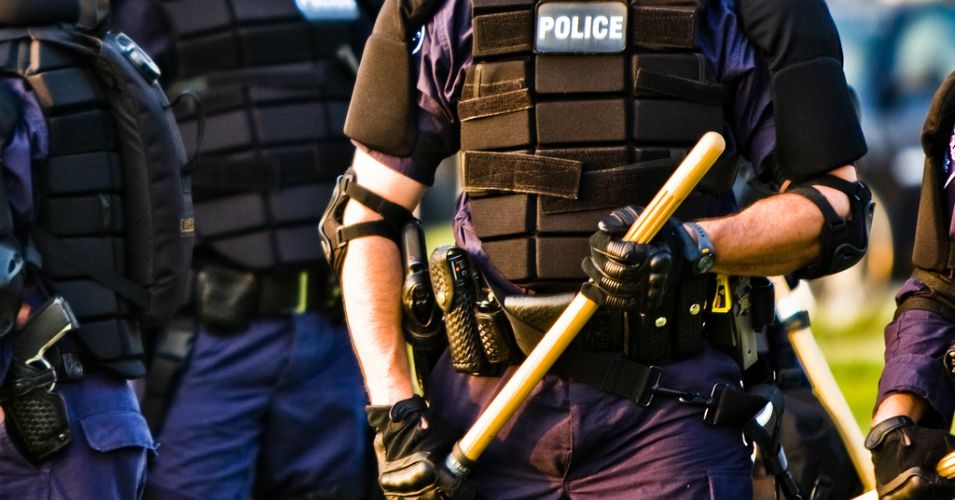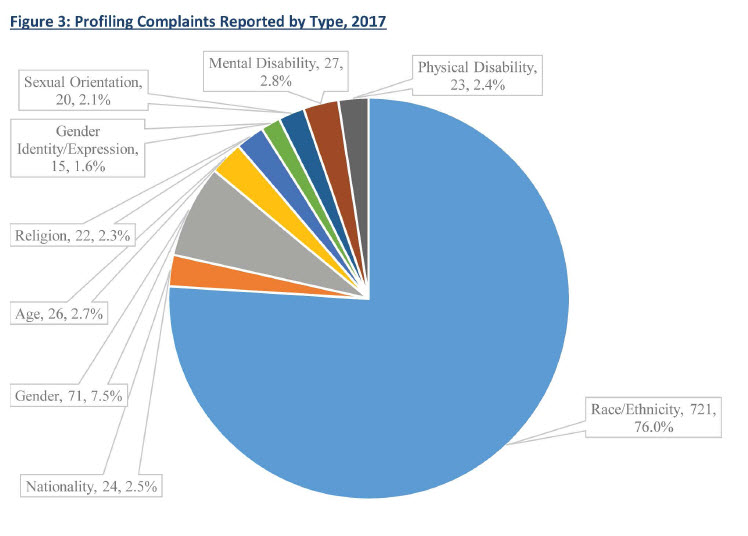

Second Annual Report from California’s Racial and Identity Profiling Advisory Board Illustrates Use of Force and Racial Profiling in 2017
California’s Racial and Identity Profiling Advisory (RIPA) Board released its second annual report and includes an analysis of civilian complaints and use of force data collected in 2017.
In the past year, the Board surveyed all California law enforcement agencies subject to stop data reporting. This included information on current policies and practices regarding racial and identity proofing, efforts to enhance law enforcement-community relations and reduce biases in policing, and policies and methods for receiving civilian complaints.
They conclude: “there was little consistency in what was included in those policies across those 114 responding agencies out of 425 total agencies.”
They argue that, “Foundational to any bias-free policing policy should be the inclusion of a clear written policy and procedure regarding an agency’s commitment to identifying and eliminating racial and identity profiling if and where it exists.”
Some their recommendation includes prohibitions against racial and identity profiling, directing personnel both sworn and on-sworn to “interact with all members of the public in a professional, impartial, fair, respectful, and nondiscriminatory manner.” Another crucial prohibition is that officers should be prohibited from using “proxies” for “protected characteristics,” these can  include: language ability, geographic location, mode of transportation, or manner of dress, among others.
include: language ability, geographic location, mode of transportation, or manner of dress, among others.
The board looked at civilian complaint data that was reported to the department on an annual basis.
The 453 agencies subject to RIP A reported 9,459 civilian complaints in 2017.
The report notes: “Seventy-nine (17.4%) agencies indicated they did not have any civilian complaints to report during the year of 2017. By contrast, 374 agencies did report that they received one or more civilian complaints. Of those 374 agencies that reported civilian complaints, 141 agencies reported one or more civilian complaints alleging racial or identity profiling. Specifically, those 141 agencies received 865 complaints alleging racial or identity profiling.”
Of the racial and identity complaints that reached a disposition in 2017, 10 (1.5%) were sustained, 77 (11.7%) were not sustained, 96 (14.6%) were exonerated, and 476 (72.2%) were determined to be unfounded.

The board also looked into Use of Force. Assembly Bill 71 (AB 71), effective January 1, 2016, “requires law enforcement agencies in California to report use of force interactions between an officer and a civilian that involve a shooting or that results in death or serious bodily injury…”
The board notes that this is the first of its kind, “making California the only state to have mandated the reporting of these types of officer uses of force.”
Under AB 71, there are four types of incidents that must be reported:
- There is a discharge of a firearm
- There is a discharge of a firearm
- There is a use of force by peace officer against civilian that results in serious bodily injury or death;
- There is a use of force by civilian against peace officer that results in serious bodily injury or death.
From January 1 to December 31 , 2017, law enforcement agencies that employ peace officers throughout the state reported a total of 707 use of force incidents that met AB 71 criteria. There were 741 civilians involved in these 707 uses of force. Of these, 390 (52.6%) were seriously injured. 172 died and 51 received a less serious injury. 120 did not sustain any injury and 8 it was unknown due to them fleeing the scene.
In addition, 516 of the 741 (69.6%) were reported to have assaulted an involved officer or officers during the incident. In addition, 487 of them were taken into custody after the use of force incident.
Here is the racial breakdown of use of force incidents which is further broken down by lethal and non-lethal force.

The Board reviews research on use of force policies and finds that “contemporary use of force policies that contain concrete instructions and limits on when certain types of force should be used correspond with a decrease in deadly and less lethal force incidents.”
One early study from NYPD found that “police shootings steadily decreased after the department implemented a policy regulating shooting discretion in 1972.” Importantly, those changes did not result in the increase of officer injury or death. There was similar analysis out of Philadelphia.
There is also data that shows lower rates of officer-involve guns deaths where “agencies that require officers to report when an officer drew a firearm had, on average, lower rates of officer involved shooting deaths when compared to agencies that did not have this requirement.”
The work of Sam Sinyangwe, who presented his finding at a June 2018 meeting on the relationship between use of force policies and observed lethal use of force.
He found the following:
- Restrictive use of force policies were associated with fewer officer involved deaths
- Police departments with more restrictive use of force policies had fewer officer involved deaths per population209
- Police departments with more restrictive use of force policies had fewer officer involved deaths per 100,000 arrests.210
- Officers in departments with more restrictive use of force policies were less likely to die in the line of duty
- Officers in departments with more restrictive use of force policies were less likely to be assaulted in the line of duty
- Officers in departments with more restrictive use of force policies were approximately as likely to sustain an injury during an assault.
In addition, “A more recent 2017 assessment of the Seattle Police Department by the Seattle Police Monitor revealed a nearly 11 percent decrease in use of force incidents after the department implemented a policy with clear directives and prohibitions on certain types of force used.”
In a statement from AG Xavier Becerra, he stated, “The Board’s recommendations will help make our law enforcement agencies more transparent and promote critical steps to enhance, and in some cases, repair the public trust. I applaud the Board’s efforts to continue fostering trust between law enforcement and the communities they serve. We look forward to continuing this important work to make all California communities safer.”
—David M. Greenwald reporting


Ridiculous disproportionate impact. Who end up with the use of force? Blacks and Latinos, that’s who.
Restricting the use of force by police is good for the police as well. I would suppose it is because police in those departments are approaching encounters in a different frame of mind that is less oriented to use of force as the primary tool of choice. This is not really a surprise. It is heartening that the data support what most of us long suspected or understand to be true based on our own experience interacting with others on a daily basis. Common sense validated.